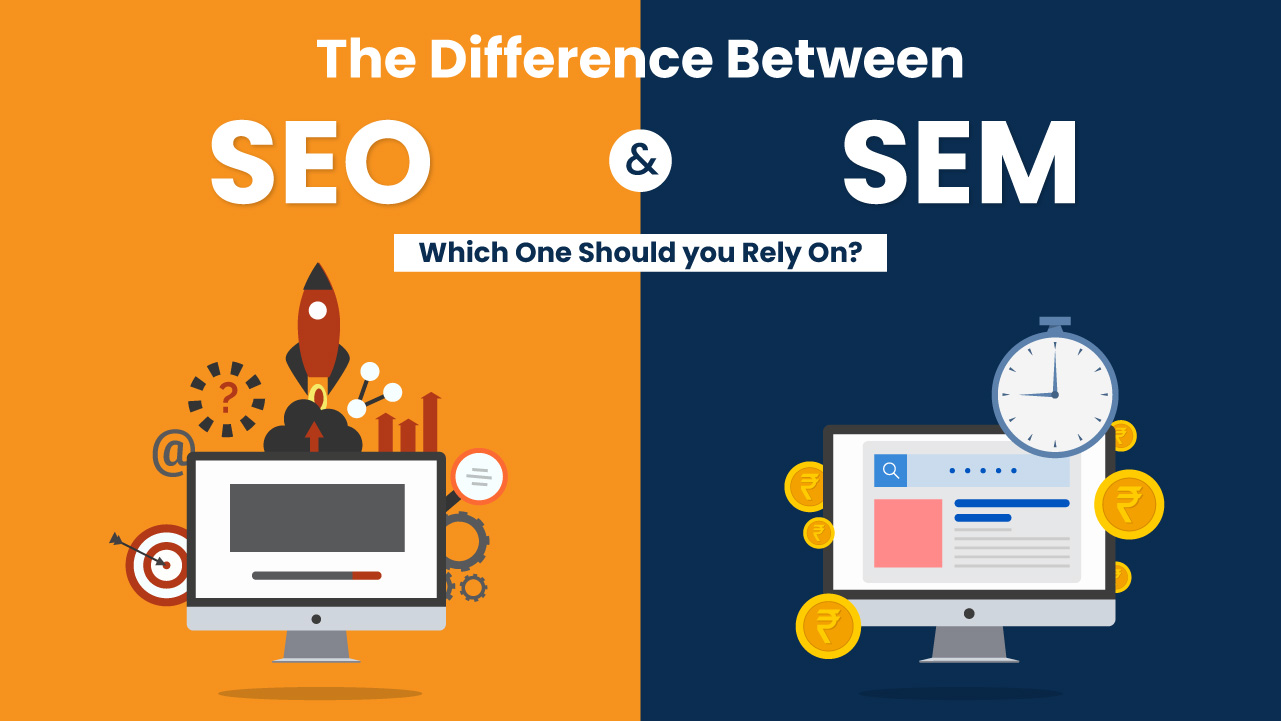Address
304 North Cardinal St.
Dorchester Center, MA 02124
Work Hours
Monday to Friday: 7AM - 7PM
Weekend: 10AM - 5PM


Table of Contents
ToggleIn today’s digital era, businesses strive to establish a strong online presence to reach their target audience effectively. Two fundamental strategies in the realm of digital marketing are SEM (search engine marketing) and SEO (search engine optimization). While they both revolve around optimizing websites for search engines, they differ in their approaches and goals. In this article, we will delve into the world of digital marketing and explore the differences between SEM and SEO, providing you with a comprehensive understanding of each.
SEM, or search engine marketing, is a strategy that focuses on driving website traffic through paid advertising efforts. It involves purchasing ad space on search engine results pages (SERPs) and bidding on relevant keywords to ensure higher visibility. SEM primarily relies on platforms like Google Ads, where advertisers pay each time their ad is clicked (known as pay-per-click or PPC).
Paid advertising through SEM allows businesses to quickly gain visibility in search engine results. It is particularly beneficial for new websites or those looking to promote specific products or services. By leveraging targeted keywords, businesses can strategically position their ads in front of potential customers, boosting brand awareness and driving traffic to their websites.
SEM requires a budget allocation for ad campaigns. The cost of SEM depends on various factors, including the competitiveness of keywords, ad quality, and the overall budget set by the advertiser. It’s essential to carefully plan and optimize campaigns to maximize ROI while staying within the allocated budget.
To evaluate the effectiveness of SEM campaigns, marketers rely on key performance indicators (KPIs). These metrics provide insights into the performance of ads, such as click-through rates (CTR), conversion rates, and return on ad spend (ROAS). By analyzing KPIs, marketers can make data-driven decisions to improve campaign performance and optimize their ad spend.
On the other hand, SEO (search engine optimization) is a long-term strategy that focuses on improving a website’s organic visibility in search engine results. Unlike SEM, SEO does not involve paid advertising but instead emphasizes optimizing various elements on a website to rank higher in organic search results.
SEO primarily centers around creating high-quality content, optimizing on-page elements, and building authoritative backlinks. By following best practices and aligning with search engine algorithms, websites can improve their organic rankings. Organic traffic obtained through SEO is not reliant on paid advertising, providing a cost-effective means of attracting visitors to websites.
One of the core principles of SEO is the creation of relevant and valuable content. By producing high-quality articles, blog posts, videos, and other forms of content, websites can attract organic traffic. SEO-friendly content incorporates relevant keywords and provides comprehensive information that meets the needs of the target audience.
In addition to content creation, technical optimization plays a crucial role in SEO. This involves optimizing website elements like meta tags, headings, URL structure, and site speed. By ensuring that websites are user-friendly, mobile-responsive, and easily crawlable by search engine bots, businesses can enhance their organic visibility.
In the competitive world of digital marketing, understanding the differences between SEM and SEO is crucial for businesses aiming to thrive online. SEM provides instant visibility through paid advertising, while SEO focuses on organic rankings for long-term success. By utilizing both strategies effectively, businesses can achieve maximum exposure and attract their target audience.
Whether you choose SEM, SEO, or a combination of both, it’s important to regularly assess your marketing goals, analyze performance metrics, and adapt your strategies accordingly. Remember that digital marketing is a dynamic field, and staying updated with the latest trends and best practices is key to staying ahead.
So dive into the world of digital marketing, embrace the power of SEM and SEO, and watch your online presence soar!
While both SEM and SEO have their merits, the choice depends on your marketing goals. SEM is ideal for businesses seeking immediate visibility and are willing to invest in paid advertising. SEO, on the other hand, is a long-term strategy that focuses on organic visibility and can provide sustainable results over time.
Using both SEM and SEO together can be a powerful approach. By leveraging SEM for immediate visibility and complementing it with SEO efforts, businesses can maximize their online presence. SEM can provide instant traffic while SEO helps build organic authority and long-term sustainability.
SEO is a gradual process, and results may not be immediate. It can take several weeks or even months to see significant improvements in organic rankings. Patience and consistent efforts are key when it comes to SEO.
Yes, one of the advantages of SEM is the ability to target specific demographics. Platforms like Google Ads offer advanced targeting options based on factors like location, age, gender, and interests. This allows businesses to reach their ideal audience with precision.
SEO is an ongoing process rather than a one-time effort. Search engine algorithms continuously evolve, and websites need to adapt to these changes. Regular monitoring, optimization, and content updates are necessary to maintain and improve organic rankings.
Yes, businesses can switch between SEM and SEO based on their marketing goals and budget. It’s important to consider the advantages and disadvantages of each approach and align them with your overall digital marketing strategy.